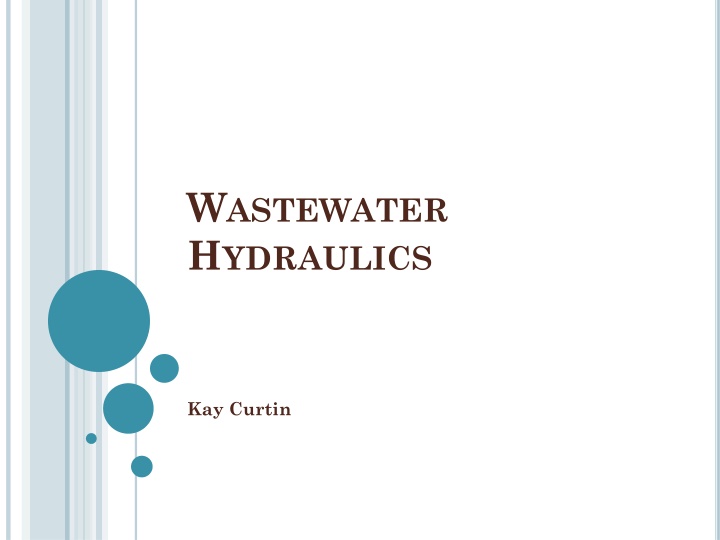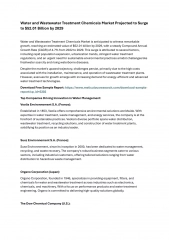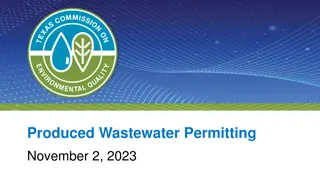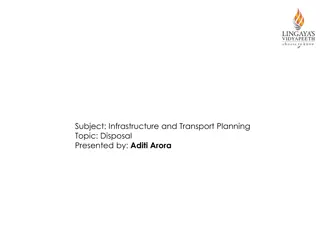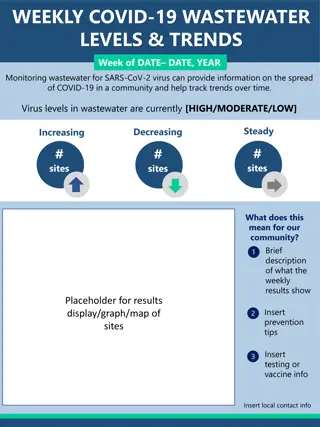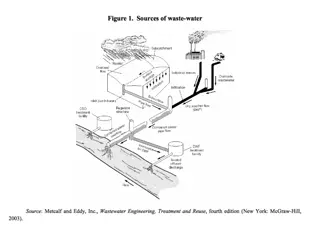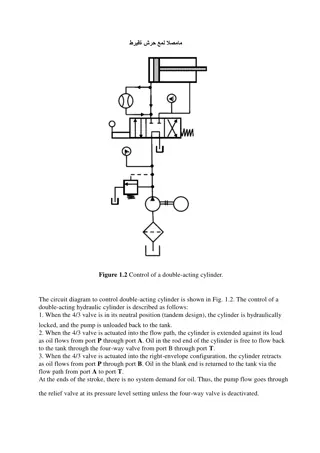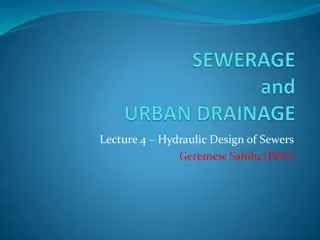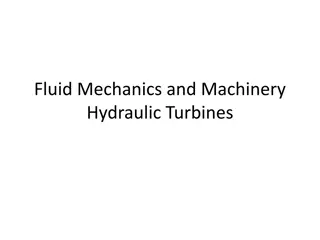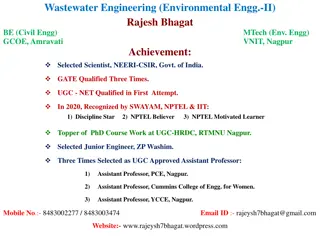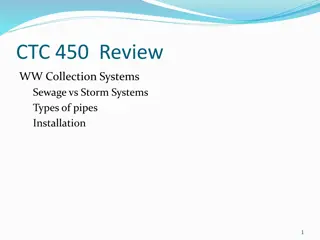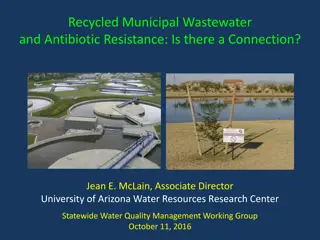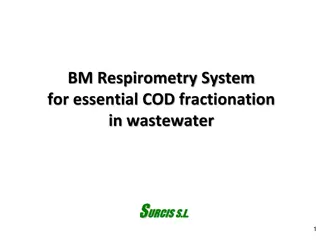Wastewater Hydraulic Principles
Understanding the fundamentals of wastewater hydraulics, weight and volume relationships, force and pressure concepts, static and dynamic heads, flow equations, energy principles, and hydraulic machines. Explore the critical role of piezometric surfaces, groundwater monitoring, and pumping hydraulics in water engineering.
Download Presentation

Please find below an Image/Link to download the presentation.
The content on the website is provided AS IS for your information and personal use only. It may not be sold, licensed, or shared on other websites without obtaining consent from the author.If you encounter any issues during the download, it is possible that the publisher has removed the file from their server.
You are allowed to download the files provided on this website for personal or commercial use, subject to the condition that they are used lawfully. All files are the property of their respective owners.
The content on the website is provided AS IS for your information and personal use only. It may not be sold, licensed, or shared on other websites without obtaining consent from the author.
E N D
Presentation Transcript
WASTEWATER HYDRAULICS Kay Curtin
WEIGHT AND VOLUME 1 cubic foot of water weighs 62.4 pounds 1 cubic foot contains 7.48 gallons of water For liquids, specific gravity is used to convert to actual pounds of a liquid Formula is sp.gr. = weight of liquid divided by weight of water The specific gravity of water is 1.0 Anything higher will float Anything lower will sink
FORCE AND PRESSURE Force Pressure Force: the push or pull influence that causes motion Force = weight Example: 1 cu.ft. of water = 62.4 pounds of force Pressure = Force/Area Ex.: pounds/sq.in. (psi) Feet of head is related to pressure 1 psi = 2.31 ft. of head 1 foot of head = 0.433 psi
HEAD STATIC HEAD: Discharge elevation supply elevation FRICTION HEAD: Energy losses due to friction (also referred to as HEAD LOSS) VELOCITY HEAD: Energy losses to maintain velocity TOTAL DYNAMIC HEAD: Static head + friction head + velocity head
FLOW AND DISCHARGE RATE Flow Equation Changes in Velocity Q = V x A Q = Flow in cu.ft./sec. V = Velocity in ft./sec. A = Area in sq. ft. Decrease in Area = Increase in Velocity Increase in velocity = Decrease in Pressure
PIEZOMETRIC SURFACE Energy cannot be created or destroyed In a closed system, the total energy is constant ENERGY HEAD: Energy units = foot-pounds Head units = feet PIEZOMETERIC SURFACE : Pressure surface of water in a system GROUNDWATER MONITORING: Piezometers
HYDRAULIC MACHINES (PUMPS) STATIC = stopped or standing Static head is the elevation of water in feet DYNAMIC = flowing Headloss = loss of pressure due to friction, which dissipates as heat, caused by: pipe roughness, pipe length pipe diameter velocity of the water
PUMPING HYDRAULICS Static Head: distance in feet between the suction and discharge water level Suction Lift: when the eye of the impeller is ABOVE the water level that you are pumping Suction Head: when the eye of the impeller is BELOW the water level being pumped Total Dynamic Head: the sum of static head, headloss, and velocity head
WHY DO WE MEASURE FLOW? Required in discharge permit Determining hydraulic loading to WWTP Determining organic loading to WWTP Monitoring internal process flows (sludge return or wasting rates) Controlling and verifying chemical dosage rates Monitoring I & I rates
TYPES OF FLOW MEASUREMENT Differential Pressure Magnetic Venturi Restricts flow and measures the drop in pressure Orifice Nozzle Static tube Measure the induced voltage caused by the flow of a conductive fluid between two electrodes, which translates to velocity
BERNOULLIS PRINCIPLE Bernoulli's principle states that an increase in the speed of a fluid occurs simultaneously with a decrease in pressure or a decrease in the fluid's potential energy.The principle is named after Daniel Bernoulli who published it in his book Hydrodynamica in 1738.
OTHER TYPES OF FLOW METERS Ultrasonic (doppler) Velocity (propellor or turbine) Positive-displacement (piston, rotating disc)
OPEN CHANNEL FLOW METERS Weires Flumes V notch Parshall Parchall Flume
